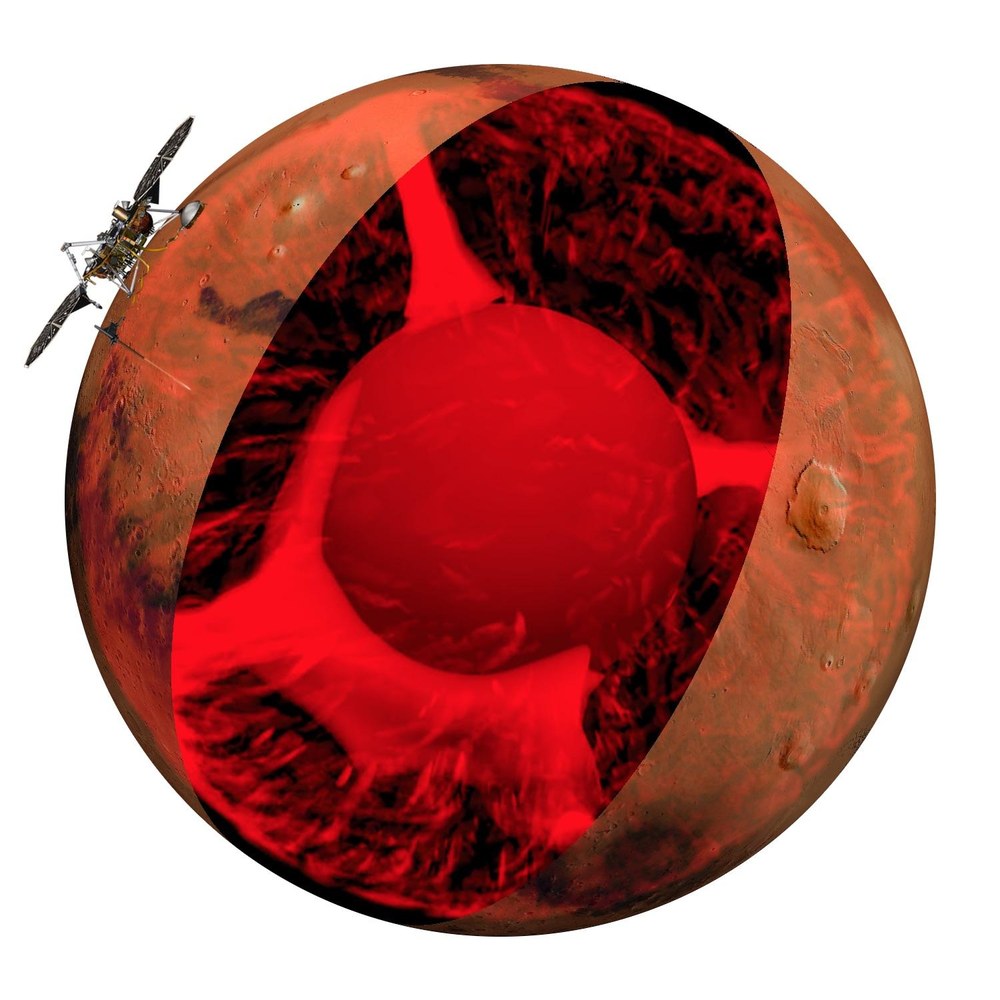3D simulation as a helping hand for the Martian mole


The German Aerospace Center (Deutsches Zentrum für Luft- und Raumfahrt; DLR) will send the 'Mole' HP3 (Heat Flow and Physical Properties Package) to Mars on board the United States InSight Mission on 5 May 2018 to conduct heat flow measurements. And it has just received good news: the landing site in the plains of Elysium Planitia most probably has a heat flow that is classified average, and will therefore be representative of Mars as a whole. This is the result of detailed simulations that DLR planetary researcher Ana-Catalina Plesa produced with her team. The three-dimensional model shows that the Mole – which will conduct the very first measurements at a depth of several metres on Mars – will not encounter extreme anomalies that might otherwise falsify the results. "Our three-dimensional model registers variance and deviations in the heat flow, and features such as the extinct volcano Elysium Mons will not impair measurements on the InSight mission," Plesa explains.
The elaborate numerical simulations are based on data from previous Mars missions on heat production in the uppermost strata of the Martian crust, as well as on model calculations of temperature distribution in the Red Planet. "The simulations represent the only predictions available thus far on the distribution of heat flow on the entire planet," emphasises Tilman Spohn, Head of the To the Institute's website and Principal Investigator of the HP3 experiment. "In a downstream process, they will also help us to place values measured at one point on Mars in relation to the planet's total heat loss." Obtaining an average value is important for the scientists and the statements they can make about Mars using this data.
'Steam engine' Mars
"A planet is a bit like a steam engine – its thermal energy, converted into mechanical work – throws up mountains or creates magnetic fields. But you have to be familiar with the energy balance if you want to know how this thermal engine works," the planetary researcher explains. "In this respect, heat flow from the inner core is an important measurand." Were the landing site to be located on a hotspot, a so-called plume, it would warm up, and the heat flow at this point might be twice as high as elsewhere on Mars. In this case, statements about the Red Planet would then only apply to a small section of its surface.
The landing site at which the InSight lander is set to touch down carrying two experiments is situated in a flat region in the low northern plains close to the border of the southern highlands, approximately 1500 kilometres south of Elysium Mons. The region was selected because the area of Mars that probably experiences the most frequent earthquakes is situated directly opposite, on the other side of Mars. This means that the SEIS seismometer by the French space agency CNES will be able to measure the tremors transferred through the core of the Red Planet. Moreover, there are not many rocks and stones covering the plains, which is a favourable factor to ensure a safe landing. "Our simulations have now confirmed that the region is good for measuring heat flow with the HP3 instrument," says Plesa. "In turn, we can use these data to verify and optimise our simulations."
The benefits of waiting
Initially, the InSight mission had been scheduled to take off for Mars in spring 2016. But technical problems discovered in the French seismometer in December 2015 led to the mission being postponed for two years. Planetary researchers at DLR used this unexpected wait to their advantage: "We developed another optimised model of the mole, which we will ask the DLR Institute of Space Systems to assemble in spring 2017," explains Spohn. "The mole will have to withstand significant mechanical stress and will be asked to install a measurement chain with temperature sensors several metres below the surface of Mars. The improved model will probably achieve this goal with greater reliability and at lower risk." Overall, the instrument will deliver readings from a depth of five metres for one Martian year, which is equivalent to two years on Earth. A long-term measurement of this kind will enable compensation of seasonal temperature differences and fluctuations over the course of a day.
Comparing Mars and Earth
Until now, the only temperature readings taken from below the soil of a celestial object were acquired during the Apollo missions: at the time, the astronauts used a hand-operated drill to bore three metres into the ground. The mole HP3, however, will complete this task autonomously on its mission. Scientists will be able to use the acquired data to infer the chemical composition of Mars. "Above all, it will put us in a position to compare the two thermal engines of Mars and Earth, one planet with plate tectonics and one without," says Spohn. "And you always learn from comparisons."
